Back at E3 2009 I was one of those who felt that Splinter Cell: Conviction marked a great step for the Splinter Cell series. It had some great visuals - notably the projection based mission updates, there was a lot of variety to the gameplay and it had a very dark tone that gave the game a very personal feeling to what was going on. Mind you, there were a number of issues that were readily apparent to fans of the series with the game but it honestly felt like Splinter Cell was moving in a positive direction after the mess that was Double Agent.
Playing Conviction sadly changed many people’s minds due to a number of frankly baffling design decisions. Firstly they removed the Spies vs. Mercs. No matter how good the new versus mode was, and it was pretty interesting in its own way, it was never going to jump that hurdle. Secondly they killed off the two spies from the Co-op mode with no real payoff for it. Thirdly the basic mechanics were changed in a way where they ruined the core Splinter Cell experience. Taking out the ability to do non-lethal runs and hiding bodies made playing Conviction as anything but a somewhat stealthy third-person shooter almost impossibly difficult.
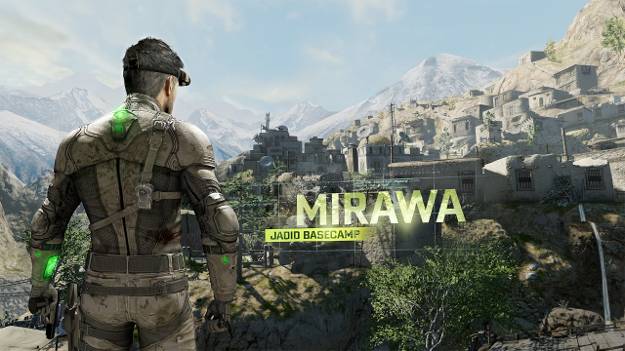
Blacklist does its best to rectify most of these problems by adding in the things that were removed but with a feeling more in tune with Conviction. This ends up being a mixed blessing. Blacklist addresses most of the complaints people had about Conviction but it does seemingly without understanding why it worked.
The problems with Blacklist start early with the plot and they just keep on coming. Sam finds himself dealing with a terrorist group known as The Engineers. This multi-national group is executing a plan known as the Blacklist wherein they target numerous American resources, sowing terror and death, in an effort to force the United States to pull out of all foreign countries. Initially this sounds like the plot of any other Splinter Cell game with Sam and the new group he heads, Fourth Echelon, working against this new threat.
However it quickly enters the realm of feeling more like 24 and less like Splinter Cell. Eventually it gets to a point where no matter what you do it feels like there’s always some guy behind the scenes rubbing his hands together and chuckling “Exactly as planned.” Get a great lead and stop one of their plans? That’s okay; they’ve got a back-up. It’s almost to the level of being a parody where no matter what you do the bad guys are able to pull ahead.
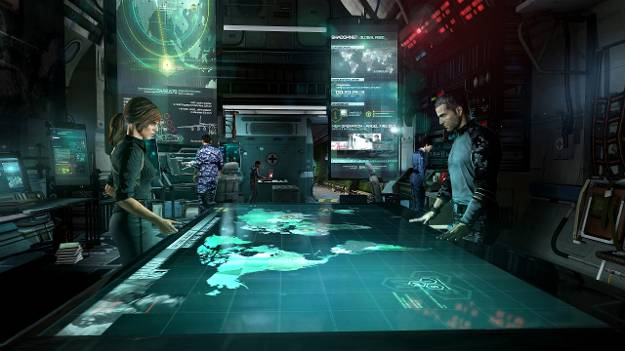
The gameplay changes fare much better than the plot but even they have some pretty big issues. There is a huge amount of weapons, armor types and gadgets to pick from and each of them is tailored towards particular play styles. Blacklist names these the three styles: Ghost, Panther and Assault.
Ghost is how the older Splinter Cell games expected you to play them – no bodies, no witnesses and no detection. Gadgets that knock enemies out or distract them so you can sneak past are used with this style and your equipment choices will minimize armor to emphasize silenced movement. Panther is more in the vein of Conviction – stay silent while killing enemies and avoid detection or enemies finding bodies. Using silenced pistols or sub-machine guns and flashbangs are part of this style. Lastly is Assault which is basically just taking the Gears of War approach to every fight. Rifles, Shotguns, explosive mines and frag grenades are all part of this approach. Kill everyone as loud and dirty as possible to get kills in this style.
Blacklist expects you to pick a style and focus on it when you play through a level so that you can “master” that style for that level. So you have to play each level three times to fully complete it. It’s a nice way to acknowledge various peoples differing styles of playing stealth games and it gives each level a fair amount of replay value which is a nice change for your average stealth game.
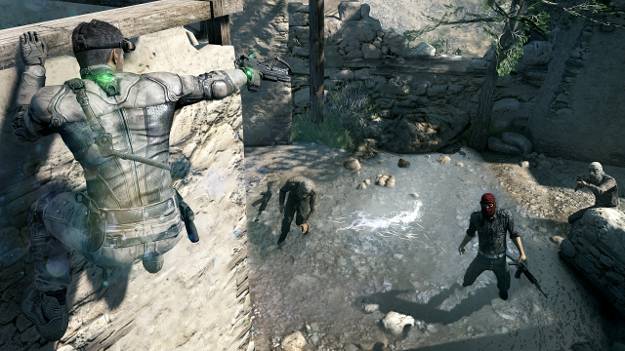
Unfortunately the game is massively finicky about what counts as what style. Did you get an enemy’s attention by shutting off the light and then avoid them? Well it might count as a ghost evasion or panther avoidance. Did you stealth kill an enemy just before he noticed you? Well it might count as an assault kill if the game feels like it. It feels more like there are a wide variety of variables that don’t necessarily make reliable sense when it comes to determining how the game assigns these things.
This wouldn’t be an issue at all if mastering a level didn’t require a certain point value to be reached every stage and earning points in more than one style is an almost guaranteed failure. So instead of encouraging you for playing the game how you like it ends up forcing you to play one way very rigidly and, if that fails even slightly, you’ll end up playing each level repeatedly to meet the requisites to master the level which can get really repetitive. It’s doubly annoying when you realize how almost stupidly easy it is to earn mastery in the Assault style compared to the other two. Basically the game rewards those gamers who play Splinter Cell like a third person shooter the most which is just fantastic.
It’s a huge shame that there are so many issues with the game design since the way the game is set up is much better than Conviction. While I love the single player portion of Conviction there are a number of issues with it and Blacklist fixes all of those. You can play non-lethally, move unconscious / dead bodies around and even stash them inside of containers to ensure they’re never found. Heck you can even pick up bodies and toss them over ledges to really hide them. There are very few mechanics from the older games that are missing so it really does capture the old feeling of Splinter Cell while moving the series forward.
Really the plot and gameplay let this game down but they aren’t the only offenders. Both the graphics and audio of the game are almost disappointing enough to send one's opinion of the game plummeting as it is.
The graphical design of the game is actually pretty decent. The appearance of each area looks really damn authentic and the animations are pretty good. Unfortunately the actual quality of the textures in question is incredibly low. Even after you install the HD texture pack the increase isn’t all that great. Backgrounds look pretty good at that point but the character models still look less than impressive. The main success of the graphical presentation is that of the lip sync and facial animation – frankly the faces look better than they did in L.A. Noire, don’t look quite as plastic and the lip sync is of damn good quality.
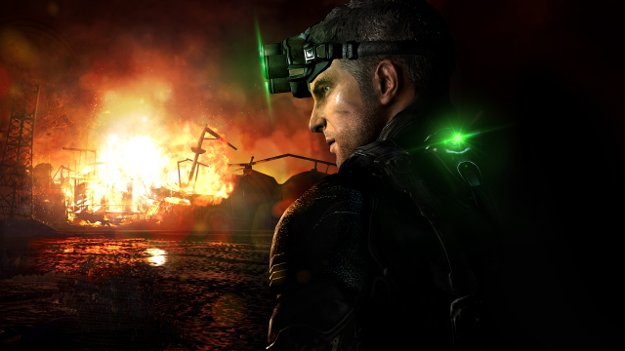
For the audio it’s easy to understand why they changed away from Michael Ironside. Knowing how much money it would have cost to get him into the studio to do the lip sync and voice acting it’s not hard to see why they wouldn’t do so. Unfortunately it would have been nice if they’d picked someone who sounds even remotely similar most of the time. During missions it can be hard for non-diehards to tell the difference but during the briefings Sam Fisher sounds noticeably younger. It’s to the point that Sam Fisher seems to be aging in reverse, getting younger sounding and noticeably more agile as the games go on. It’s a really, really stupid decision on the part of the development team. All of the other voice actors do decent enough jobs that it’s hard to complain about any of them, Sam is the only one who really lets the work down.
The multiplayer brings back the classic Spies vs. Mercs gameplay but it isn’t the same. It feels like the developers added this in as an afterthought since it lacks a lot of the little touches that made the older versions of it so highly regarded. Being able to whisper taunts or threats into the ear of someone being held hostage before snapping their neck was fantastic and the lack of it disappoints. It also feels like there’s a much greater weight towards the Mercs in this game since a spy has to invest a good bit of money into buying better equipment setups (earned in both single and multi-player) but the Merc has a more serviceable equipment load out straight out the door.
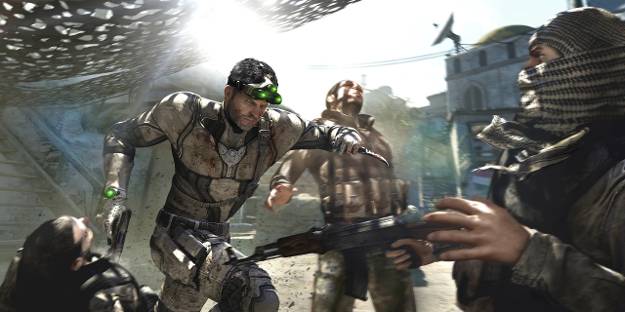
Being forced to spend the money you earn from doing missions to buy equipment for single player, multi-player and co-op game modes also provides its own issues. A friend buys the game after you and wants to play co-op? Well you either have to wait for him to play some single player and spend all his money on co-op focused loadouts or hope he’s playing the game the same exact way. Or if you want to play online vs. mode you’ll have to save up money from replaying levels to earn money for an improved load out.
The best way to sum up Blacklist is “good idea.” Almost everything that the development team has done seems like a good idea on paper but the actual execution of it leaves a lot to be desired. As you experience each aspect of the game you’ll find that element after element just cries out to be used in a less crappy fashion. I’m not sure if these elements were the game developer’s intention or if some things were forced on them by meddling higher-ups but the result is the same – a damn good game ruined by a series of bad design decisions.